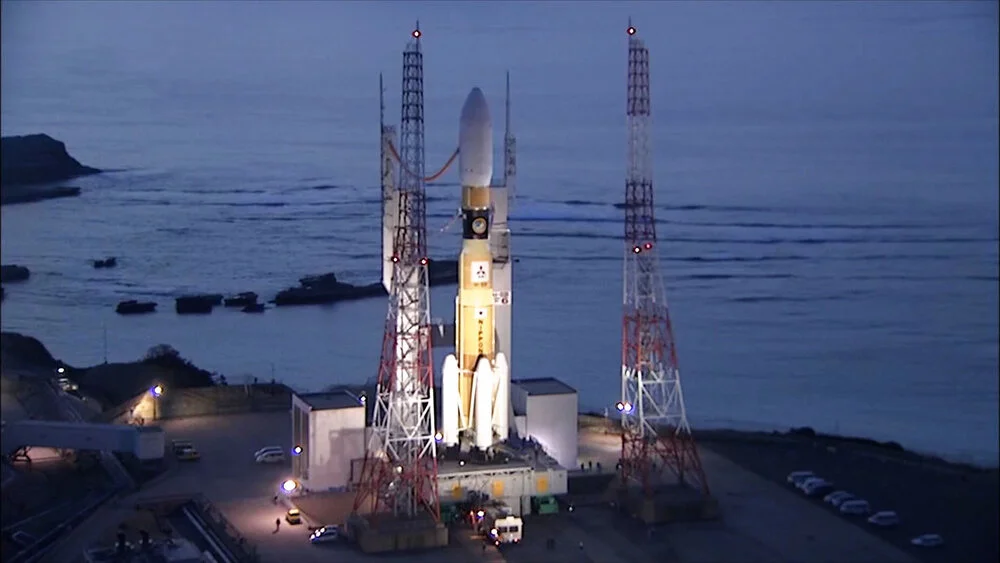Kounotori 8 mission scrubbed after launch pad fire
/The Japan Aerospace Exploration Agency called off the launch of its H-2B rocket with the Kounotori 8 spacecraft after a fire broke out at the base of the vehicle just 3.5 hours before its planned liftoff. The cargo ship is slated to resupply the International Space Station.
Liftoff was expected to occur at 21:33 UTC Sept. 10, 2019, from Tanegashima Space Center in Japan. However, about 90 minutes after the onset of the fire, the flight was officially scrubbed.
"Today's launch is postponed because we found a fire around a hole in the deck of the mobile launcher at 3:10 a.m. Japan Standard Time," a JAXA official said via a loudspeaker at the Tanegashima Space Center. "Now, we are trying to extinguish the fire."
The pad’s sound water suppression system could be seen spraying the rocket for hours after the initial fire started. There are no reports of any injuries.
According to Irene Klotz of Aviation Week, Mitsubishi Heavy Industries is saying the launch will not occur for at least two or three days in order to investigate the cause of the fire. It occurred between solid rocket boosters No. 3 and No. 4.
“First noticed at 3:05 a.m. [local time],” Klotz tweeted. “Fire seemed to be on the surface of mobile launcher, not inside the hole, which is there by design for venting.”
The cause of the fire is not known and it is not known if there is any damage to the rocket. MHI has not been able to access the launch pad yet.
According to Klotz, JAXA said if the launch is delayed by more than a month, Kounotori 8 will need to be inspected and repacked.
The Kounotori 8 spacecraft is expected to be the eighth Japanese cargo ship to resupply the ISS. In addition to 3.4 metric tons of supplies and equipment in the pressurized module, the vehicle also carries with it six lithium-ion batteries totaling about 1.9 metric tons in the unpressurized section to continue the years-long process of replacing the outpost’s old nickel-hydrogen batteries with the newer units.
Once Kounotori 8 launches, it should take about four days to reach the outpost. There, it will position itself some 10 meters beneath the Destiny module in order for the crew aboard to capture the spacecraft with the 17.6-meter-long Canadarm2 remote manipulator system.
After capture, the arm will be commanded to berth the spacecraft to the Earth-facing port of the Harmony module where it is expected to remain for around two months as crews transfer cargo out of the vehicle and reload it with unneeded equipment and trash.
Follow @OrbitalVel on Twitter for the latest updates.
Video Credit: SciNews



